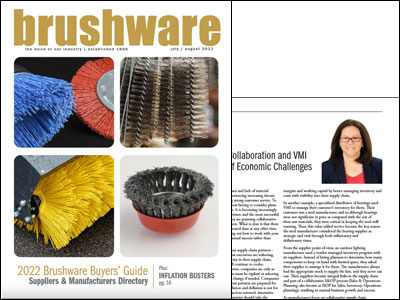Manufacturers are experiencing continued inflationary pressures threatening customer service and profit margins with record-breaking price increases and lack of material availability. To add fuel to the fire, they are also starting to worry about preparing for a potential recession. It is becoming increasingly difficult to navigate these volatile times, and the most successful are not doing it alone. Instead, they are pursuing collaborative programs with supply chain partners. What is clear is that there will be more winners and losers created than at any other time in history. Thus, it is worth figuring out how to work with your supply chain partners to ensure mutual success rather than mutual demise.
First, it makes sense to evaluate your supply chain partners – both customers and suppliers. Most executives are reshoring, nearshoring, and reallocating capacity in their supply chain, and so the supply chain will continue to evolve. However, as the pandemic has proven, we are only as strong as our weakest link, and so we must be vigilant in selecting our supply chain partners and change them if needed. Don’t simply assume that your current partners are prepared for what’s ahead. Navigating both inflation and deflation is not for the faint of heart. Only the most action-oriented, innovative, and collaborative will thrive. Thus, assess your situation and be deliberate in your choices.
Once you have strong partners, turn your attention to how to work together to achieve dramatic results. One successful approach is to roll out a collaborative ordering process, also known as vendor managed inventory (VMI). For example, when working with an aerospace and defense company that supplied controls for the cockpit, we partnered with our client to implement and upgrade VMI. We partnered with our client’s customers (such as Boeing) to determine what to send to their locations for them. We were able to improve service to Boeing and maintain high OTIF (on-time-in-full) levels while eliminating their cost of ordering and achieving their inventory level targets. From the manufacturer’s perspective, they were able to expand business by achieving the top supplier status. Additionally, they were able to improve margins and working capital by better managing inventory and costs with visibility into their supply chain.
In another example, a specialized distributor of bearings used VMI to manage their customer’s inventory for them. Their customer was a steel manufacturer, and so although bearings were not significant in price as compared with the rest of their raw materials, they were critical in keeping the steel mill running. Thus, this value-added service became the key reason the steel manufacturer considered the bearing supplier as strategic and vital through both inflationary and deflationary times.
From the supplier point-of-view, an outdoor lighting manufacturer used a vendor managed inventory program with its suppliers. Instead of hiring planners to determine how many components to keep on hand with limited space, they asked their supplier to manage it for them. The manufacturer always had the appropriate stock to supply the line, and they never ran out. Their suppliers became integral links in the supply chain and part of a collaborative S&OP process (Sales & Operations Planning, also known as SIOP for Sales, Inventory, Operations planning), resulting in mutual business growth and success.
As manufacturers focus on collaborative supply chain partnerships and programs such as VMI, they are creating unique value in their supply chain. To thrive during inflation and deflationary times, it is important to be ready to pivot quickly with changing conditions. Additionally, by partnering with their end-to-end supply chain, these manufacturers create sustainable, profitable growth for mutual success.
As originally published in Brushware Magazine on July-August, 2022



